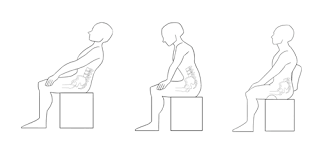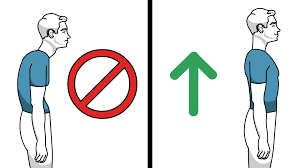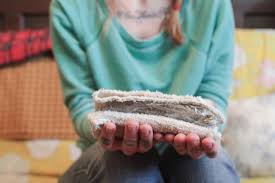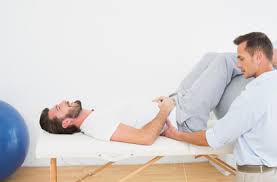 New Health Guide
New Health Guide
It is quite natural to give your tailbone no attention until it actually starts creating problems. The pain you experience is usually centered at the bottom of your spine and above your buttocks. Precisely, it affects the multi-segmented bone at the very end of your spine. While the size of your tailbone (coccyx) is quite small, it still plays an important role in keeping you stable when you sit. Moreover, many muscles, tendons, and ligaments go through the area, which is why you just cannot ignore your tailbone pain when sitting. Let's find out more about the causes and some treatment options.

Tailbone pain – coccydynia – may be the result of an injury or trauma to the coccyx caused by prolonged sitting or a fall. Vaginal childbirth and degenerative joint changes can also lead to tailbone pain. The pain you experience is usually dull and achy but can become severe during certain activities, such as changing your position, sitting, or prolonged standing. Some people may find sex and defecation quite painful. It can also make menstruation a bit uncomfortable for women.
You usually do not need to do anything about your tailbone pain when sitting because it goes away on its own. It may take a few weeks or sometimes months to recover completely. However, you should consider seeing your doctor if your tailbone pain is severe and has not improved after several days.
Tailbone pain is usually nothing serious, but in rare cases, it can be a sign of cancer. Your doctor will order an MRI scan to rule out the possibility of cancer. It also helps identify any bone fracture or other injury. Your doctor may ask you to get an X-ray in both standing and sitting position to identify the root cause of problem.
As mentioned already, your pain usually gets better over time, but you can still try some remedies and take homecare measures to accelerate recovery. Here are a few ways to help manage your tailbone pain when sitting.

Applying an ice pack on your tailbone may help relieve inflammation and pain. If you have sustained an injury, be sure to ice the area at least for the first 48 hours. You should be applying it at least once every hour. Simply get an ice pack or wrap some ice in a cloth and apply it to your tailbone for about 20 minutes at a time. You can apply ice only thrice a day after the first 48 hours.

In many cases, your tailbone pain is the result of a bad posture. Therefore, the treatment would involve correcting the posture. You should make every effort to sit upright. Be sure to keep your core engaged with your back slightly arched and neck straight. It is possible to experience tailbone pain when you get up from a sitting position, but you can manage it by leaning forward a bit before you rise up.

You can find special cushions that you have to place underneath the tailbone to reduce pain and discomfort. You can also use a piece of foam rubber to make a cushion. All you have to do is make a hole in the center of foam rubber like a toilet seat. Your doctor can also help you determine the type of cushion best suited for your needs.

Just like using an ice pack, applying a heating pad can also help decrease pain. Use a heat pad for at least 20 minutes at a time – you should be using it 4 times in the beginning. Taking a hot bath may also help reduce some discomfort and tailbone pain when sitting.

Your doctor will let you know if you have a tailbone fracture. A fracture in this area cannot be treated with a cast. Your only option would be to take plenty of rest and avoid heavy lifting and strenuous activities until you feel better. In most cases, you have to stay away from strenuous activities for 8-12 weeks.

Your pain may become worse when you strain during bowel movements. It is therefore important to take steps to avoid constipation. You can increase your intake of fluid and fiber to help prevent constipation. It is also a good idea to use a mild stool softener until your tailbone pain goes away completely.

Along with using home remedies, you can also take OTC medications to relieve tailbone pain when sitting. Non-steroidal anti-inflammatory drugs (NSAIDs) usually work great to relieve tailbone pain. You can try naproxen or ibuprofen. Similarly, acetaminophen can also help relieve pain.
If your pain is severe, your doctor may inject a nerve block, local anesthetic, or steroid medication into your tailbone to help manage the pain. It is not uncommon for doctors to recommend a combination of steroid and anesthetic injections. You can also take an anti-seizure medicine or antidepressants to ease your pain. Your doctor will consider the severity of your pain and other symptoms to determine the best treatment option.

Along with taking medications, going for a physical therapy session may also help improve your overall condition. Your physical therapist will show you what exercises will help strengthen your pelvic floor and stomach muscles that support your tailbone. Your therapist may also perform coccygeal manipulation, a technique that involves inserting a gloved finger in your rectum to help move your tailbone in a correct position.

You can control your tailbone pain when sitting using homecare measures and medications, but sometimes you need to under a surgical procedure to treat your injury. In some cases, your surgeon may remove part of the coccyx to treat the problem. They may also perform coccygectomy to remove the entire coccyx. Keep in mind that even if you go for surgery, you may not experience pain relief right away. It takes time to feel better. Moreover, surgery may also lead to complications, like infections. Be sure to discuss all the pros and cons with your doctor before you go for surgery.